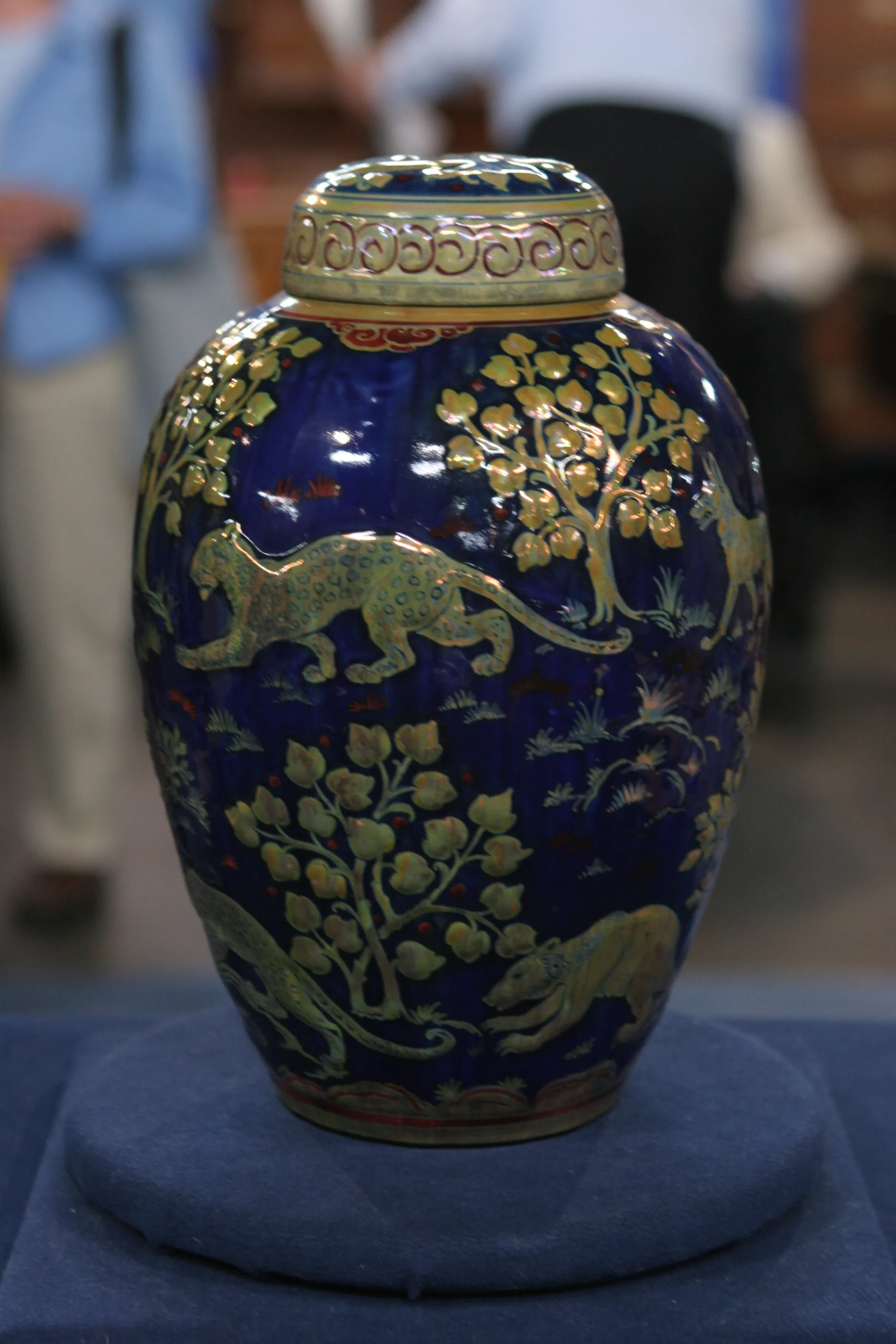GUEST: I know it's a piece of Majolica. It was something that my husband purchased because I liked Majolica, but not necessarily this type. He also liked clocks. I thought he said at one time that it was a French clock, but I don't think it is. He had many types of collections over the years.
APPRAISER: When you say you're a Majolica collector but not this kind of Majolica, what is it about this that doesn't speak to you?
GUEST: That guy.
(both laugh)
APPRAISER: He's eyeing you at the moment.
GUEST: I know he is. I love the colors, the colors are beautiful.
APPRAISER: That's always what grabs Majolica collectors. Interestingly enough, what you don't like about this object is exactly what would make this object appealing to a collector. This is an example of what's referred to as Palissy Ware. And the point of Palissy Ware is all of the creepy crawlies that are sometimes applied to it. In France, in particular in Paris and in Tours in the 19th century, there were a group of ceramists that were working in the style of a man active in the 16th century called Bernard Palissy, and applying normally oval platters, circular platters, with fish and crustaceans and amphibians and shells and all kinds of small creepy crawlies and leaves. This particular piece has all of that going for it. It's modeled as a grotto, very popular. All of this is meant to be dripping water. It's very, very rare to have something like this that is a ceramic clock case. Your husband was right-- the clock itself is French-- but interestingly enough, the clock was retailed in America. Canfield Brothers and Co. was kind of Baltimore's answer to a Tiffany & Co., or Bailey Banks & Biddle. They were jewelry stores that retailed ine art objects. Now, what's very interesting is that the ceramic of the clock is signed. And if we turn it around, there is a very prominent incised "AB" monogram. That "AB" stands for Achille Barbizet. Now, Barbizet is the name of the ceramics firm started by Achille's father, Victor, in the 1850s, '60s. Victor himself died around 1870, and the son took over and continued manufacturing under the name of Maison Barbizet. Canfield went out of business in 1881. So this piece can be dated to between, say, 1875 and 1881. Now, the fact that it is rare does not necessarily make it more valuable, because Palissy Ware collectors tend to prefer to focus on the flat, large, oval platters than they do the three-dimensional pieces. This piece is in pretty good condition. It has a few little chips. And up here on the top would have originally been a small little urn. Do you have any idea what your husband will have paid for it, and how many years ago did he find it?
GUEST: About 15 to 20 years ago, and I have absolutely no idea what he paid for it.
APPRAISER: If this piece were to come at auction, I would say, conservatively, it would bring $4,000 to $6,000. Retail, it wouldn't surprise me if somebody sold it in a shop for as much as $10,000.
GUEST: I guess I'll have to learn to like that guy.
APPRAISER: I think that he obviously likes you. He hasn't stopped looking at you the whole time.
GUEST: I noticed. I can see his teeth.











